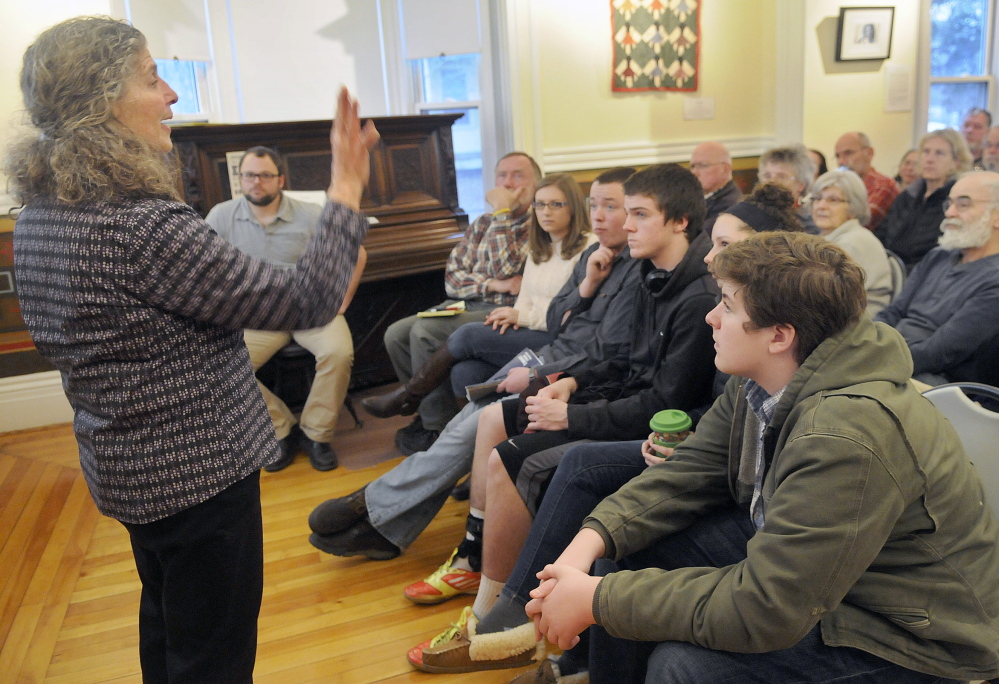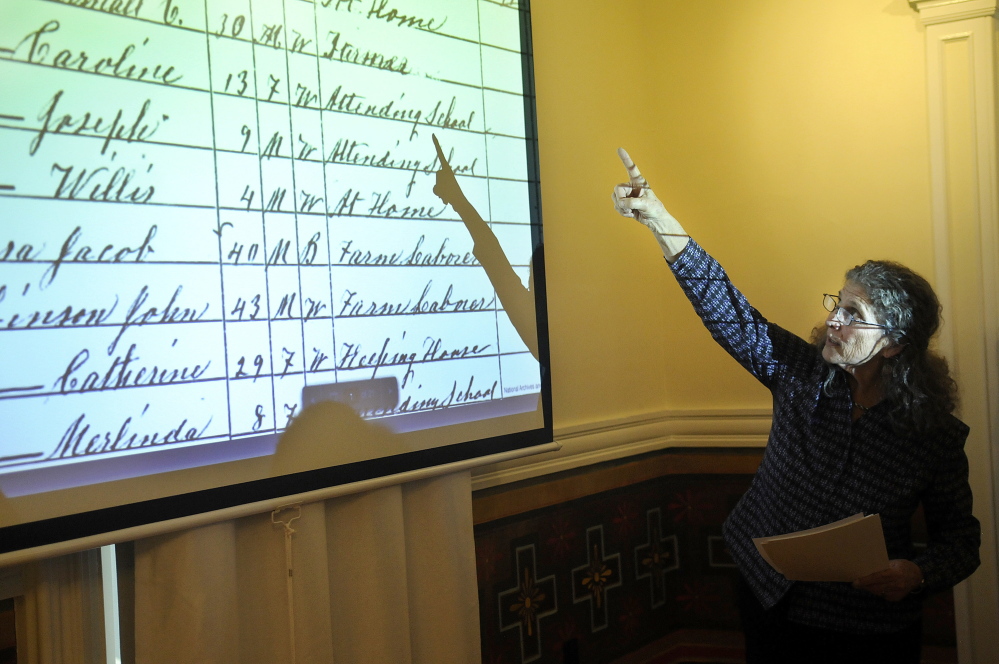RICHMOND — Leeds native Gen. Oliver Otis Howard helped bring hundreds of escaped and freed slaves to Maine to find new lives as free men and women, though for many that meant toiling on farms or in quarries for low wages in rural communities where they were often the only black people in town.
Howard, historian Candace Kanes told about 50 people at the Southard House Museum on Monday, helped numerous former slaves start new, free lives, both during the Civil War and after, when he was commissioner of the Freedmen’s Bureau, a federal government agency that aided freed slaves after the war.
“MLK Day and recent events involving blacks and police in a number of cities across America afford an excellent opportunity to talk about historical race relations,” Kanes said. “The past lives with us. Which is why this topic is so important to talk about. We didn’t solve race relations. We didn’t solve it by the Civil War, and we haven’t solved it yet.”
Howard brought a former slave, Julia, back to help his wife, Elizabeth, at their Augusta home. He paid Julia to cook and clean and help care for their four children.
He also worked with Adams Merrill, owner of the Merrill Quarry in Brownville, to place about 34 families of former slaves in the small Maine town. They worked in the quarry, where former slaves made up about one-quarter of the workforce, and where their children attended local, unsegregated schools.
Merrill built homes for workers.
Kanes said theories on Merrill’s motivation include both that he wanted to help the former slaves, but also that he had found a source of cheap labor. Many of the former slaves had only one place to shop, the company store, where the cost of their purchases sometimes equaled or exceeded their paychecks.
“Merrill wanted to help the former slaves, but he was also a businessman and wanted to pay laborers as little as possible,” said Kanes, who is researching how freed slaves came to Maine during and after the Civil War. “The former slaves were unaccustomed to cold weather, and the homes Merrill had built for them were, essentially, uninsulated. About one-third of them suffered pneumonia and died. And the others decided, maybe this isn’t the place for us. By 1879 all had left the area.”
Kanes, curator of the Maine Historical Society’s Maine Memory Network, a statewide digital museum and archive, holds degrees in modern American history and American and women’s studies. She has taught history, American studies and women’s studies at Bates College, the University of New England, University of Southern Maine and Maine College of Art.
A CHALLENGING LIFE
She spoke in Richmond as part of the Southard House Museum’s new cultural and educational programming at the privately owned, nonprofit museum in the former home of shipbuilder Charles Southard.
Southard’s father, Thomas, also a shipbuilder and sea captain, and his wife, Jane, employed a black servant, Martha Janney from South Carolina, according to the 1870 census, one of two black women in Richmond at the time.
“How she got to Richmond is a mystery,” Kanes said. “What happened to her is equally a mystery. She may have gotten married, died, left Maine, or just got ignored in the records.”
Kanes said the 1870 census indicates hundreds of black people lived in Maine, often as farm workers, and they were often the only black person or family in small rural Maine towns. According to the 2010 Census, Maine is still 95 percent white, ranking second after Vermont as the state having the fewest minorities of color.
“It’s not hard to imagine life in rural Maine for a solitary black man or woman” could be challenging, Kanes said to the crowd which included several young children and teenagers. “So it’s not surprising many who came after the war didn’t stay. They likely had thoughts about experiencing freedom and thoughts about losing the communities they were part of.”
Former slave Samuel Osborne settled in the Waterville area, eventually taking over his father’s job as a janitor at Colby College, where he was a beloved, though sometimes mocked, figure on the campus for decades.
Kanes said she got some material for her research from the Kemp family, who remain in the central Maine area. She said George Washington Kemp was a former slave who was brought to Maine by Howard to help on his mother’s farm.
Kanes said she is researching the issue in part because, when she curated a Civil War exhibit, she was frustrated at the lack of information about black and mixed race soldiers from Maine.
She said it is also frustrating that because many of the former slaves could not read or write, much of the written history of the time was written by middle-class and elite white men, not from the perspective of the former slaves themselves.
Copy the Story Link
Send questions/comments to the editors.





Success. Please wait for the page to reload. If the page does not reload within 5 seconds, please refresh the page.
Enter your email and password to access comments.
Hi, to comment on stories you must . This profile is in addition to your subscription and website login.
Already have a commenting profile? .
Invalid username/password.
Please check your email to confirm and complete your registration.
Only subscribers are eligible to post comments. Please subscribe or login first for digital access. Here’s why.
Use the form below to reset your password. When you've submitted your account email, we will send an email with a reset code.